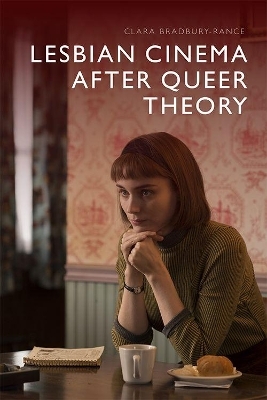
Lesbian Cinema After Queer Theory
Seiten
2019
Edinburgh University Press (Verlag)
978-1-4744-3536-9 (ISBN)
Edinburgh University Press (Verlag)
978-1-4744-3536-9 (ISBN)
By offering close readings of key contemporary films such as 'Blue Is the Warmest Colour, Water Lilies' and 'Carol' alongside a broader filmography encompassing over 300 other films released between 1927 and 2018, the book provokes new ways of understanding a changing field of representation.
The unprecedented increase in lesbian representation over the past two decades has, paradoxically, coincided with queer theory's radical transformation of the study of sexuality. In Lesbian Cinema after Queer Theory, Clara Bradbury-Rance argues that this contradictory context has yielded new kinds of cinematic language through which to give desire visual form. By offering close readings of key contemporary films such as Blue Is the Warmest Colour, Water Lilies and Carol alongside a broader filmography encompassing over 300 other films released between 1927 and 2018, the book provokes new ways of understanding a changing field of representation. Bradbury-Rance resists charting a narrative of representational progress or shoring up the lesbian's categorisation in the newly available terms of the visible. Instead, she argues for a feminist framework that can understand lesbianism's queerness. Drawing on a provocative theoretical and visual corpus, Lesbian Cinema after Queer Theory reveals the conditions of lesbian legibility in the twenty-first century.
The unprecedented increase in lesbian representation over the past two decades has, paradoxically, coincided with queer theory's radical transformation of the study of sexuality. In Lesbian Cinema after Queer Theory, Clara Bradbury-Rance argues that this contradictory context has yielded new kinds of cinematic language through which to give desire visual form. By offering close readings of key contemporary films such as Blue Is the Warmest Colour, Water Lilies and Carol alongside a broader filmography encompassing over 300 other films released between 1927 and 2018, the book provokes new ways of understanding a changing field of representation. Bradbury-Rance resists charting a narrative of representational progress or shoring up the lesbian's categorisation in the newly available terms of the visible. Instead, she argues for a feminist framework that can understand lesbianism's queerness. Drawing on a provocative theoretical and visual corpus, Lesbian Cinema after Queer Theory reveals the conditions of lesbian legibility in the twenty-first century.
Clara Bradbury-Rance is a Lecturer in the Department of Liberal Arts at King’s College London.
| Erscheinungsdatum | 02.04.2019 |
|---|---|
| Zusatzinfo | 36 B/W illustrations |
| Verlagsort | Edinburgh |
| Sprache | englisch |
| Maße | 156 x 234 mm |
| Themenwelt | Kunst / Musik / Theater ► Film / TV |
| Kunst / Musik / Theater ► Theater / Ballett | |
| Sozialwissenschaften ► Kommunikation / Medien ► Medienwissenschaft | |
| ISBN-10 | 1-4744-3536-X / 147443536X |
| ISBN-13 | 978-1-4744-3536-9 / 9781474435369 |
| Zustand | Neuware |
| Haben Sie eine Frage zum Produkt? |
Mehr entdecken
aus dem Bereich
aus dem Bereich
wie KI und virtuelle Welten von uns Besitz ergreifen – und die …
Buch | Hardcover (2023)
Heyne (Verlag)
CHF 29,90
eine jüdische Filmgeschichte der Bundesrepublik
Buch | Hardcover (2023)
Hanser (Verlag)
CHF 39,20


